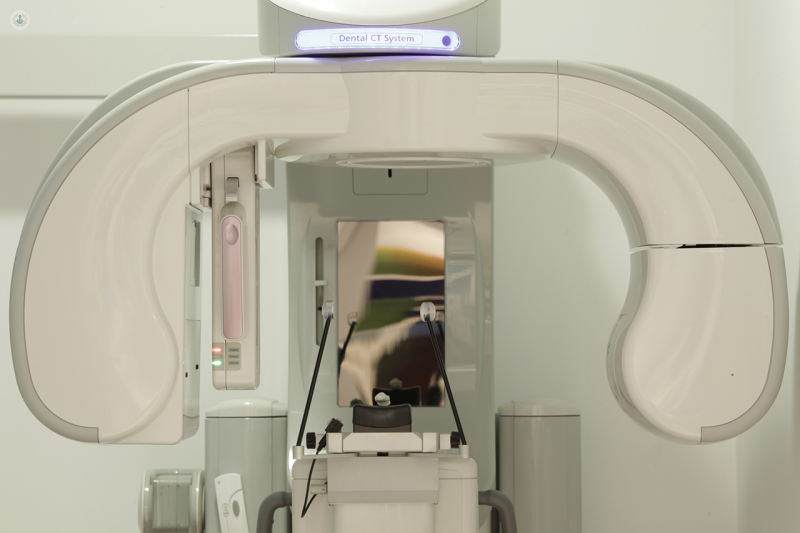


What is dental CBCT?
A dental CBCT scan is a type of CT scan used in dentistry. First, it is useful to understand what the terms “CT” and “CBCT” mean.
CT stands for “computerised tomography”. It is also known as a CAT scan (“computed axial tomography” or “computer aided tomography”). It is a type of scan to see inside a patient without cutting, which uses x-rays fired from different angles to capture a cross-section of images inside the body. It can be used to identify a number of medical complications, and some modern scanners even allow the images to be assembled into a virtual 3D model.
CBCT stands for “cone beam computerised tomography”. In this variation on the CT scan, the x-ray beams diverge in a cone shape. It is used extensively in dentistry. Dental CBCT scanners include a chair or table for the patient, and the CBCT scanner rotates around the patient’s head, capturing hundreds of images, which are then assembled into a 3D model.
What does it involve?
The patient sits in the chair or lies on the table attached to the scanner. The x-ray source and the detector, located opposite each other on a C-arm or gantry, rotate in unison in a 360° sweep around the patient’s head, capturing multiple images from different angles. In just one rotation, up to 200 high-resolution 2D images can be taken. These are then digitally assembled into a 3D model, which can be evaluated by the dentist.
What is a dental CBCT scan for?
Dental CBCT scans are largely used for planning orthodontic treatments, such as surgical planning for impacted teeth, dental implants, and reconstructive surgery. It can also be used for diagnosing certain conditions, such as temporomandibular joint disorder, and in evaluating the jaw, sinuses, nasal cavity and nerve canals.
How can you prepare for a dental CBCT scan?
There is no special preparation for CBCT scans, but your dentist will ask you to remove any metal objects (jewellery, glasses, hearing aids, etc.) before the procedure. As the test involves x-rays, women should inform the dentist if they are pregnant.
What does it feel like during the procedure?
You shouldn’t feel any different during the test – it is completely painless, and you can return to your normal activities afterwards.
What are the benefits/risks of a dental CBCT scan?
There are a number of benefits of having a CBCT scan over regular dental x-rays or other scans:
- Better image quality
- The scan creates images from many angles, which can be manipulated digitally – this allows for a more complete evaluation.
- Painless and non-invasive
- Highly accurate scans providing more detail than conventional x-rays
- Images soft tissue and bone simultaneously
- No radiation remains in the patient’s body after the test.
- There should be no immediate side-effects.
On the other hand, CT x-rays use a higher concentration of radiation than conventional x-rays, meaning there is a slightly higher risk of cancer. However, the risk is still small, and in general the benefits outweigh this risk. More caution should be used with children, who are more sensitive to radiation than adults.
